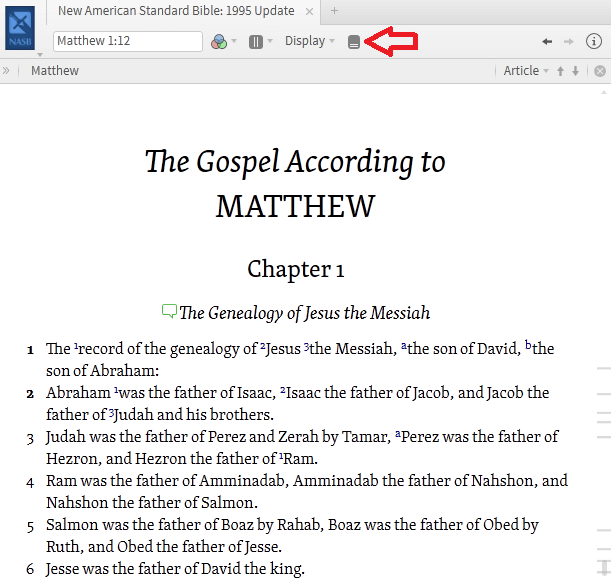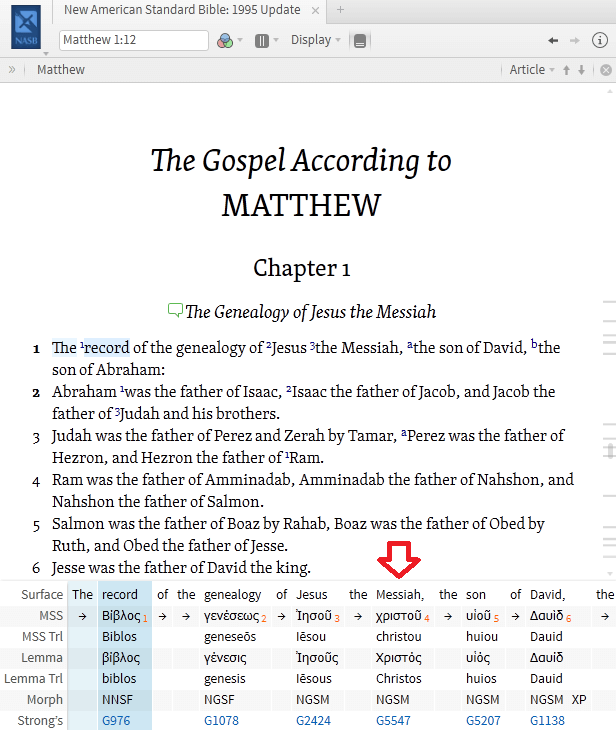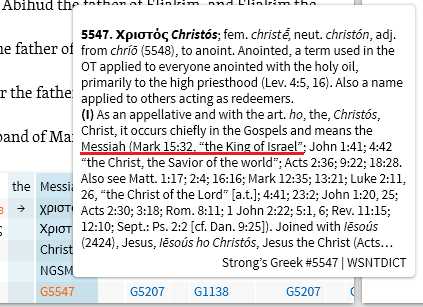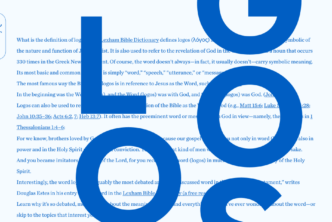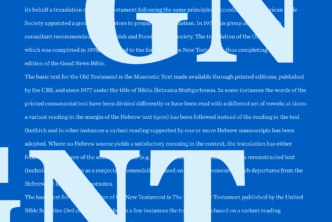You probably remember the first time someone told you about doing Bible study by looking at Greek and Hebrew, the languages it was originally written in. When I first heard that, I wondered how much Greek or Hebrew I would need to get under my belt.
Well, there’s good news: Logos 5 makes it easy to start exploring Greek and Hebrew words, even if you don’t know these languages. Here’s a fine way to get started.
1. Turn on the Reverse Interlinear.
It sounds technical, but what it does is pretty straightforward: it reverses the English translation back to its original language. It also opens up a few new pathways for exploring the text, but we’ll get to those later. First, we need to turn it on.
Without the reverse interlinear, your Logos 5 Bible will look like this.
But when we hit the Reverse Interlinear button, we get simple word-by-word comparison of the passage.
We’ve just opened up a bunch of new study possibilities, but for now, we’ll focus on the Strong’s numbers in the bottom row.
2. Look up the Strong’s number.
Matthew kicks off his gospel with the genealogy of “Jesus the Messiah.” What is a Messiah? With the Reverse Interlinear, it’s easy to find out.
Just hover over the Strong’s number, and Logos looks up that word in your preferred Bible dictionary. I enjoy The Complete Word Study Dictionary: New Testament because it explains Greek words in ways that a non-Greek scholar (like me) can understand. Whatever your preferred dictionary is, Logos pulls its definition for the word instantly—so long as you have that dictionary in your library.
I learn that both “the Messiah” and “the Christ” refer to “the Anointed One.” I also see that it’s used in conjunction with “King of Israel” and “Savior of the world.”
So, without leaving my Bible, I’ve already learned a few things:
- The first time Matthew references Jesus, it’s as the Messiah, or Anointed One. That gives me an idea of how Jesus will be portrayed in the rest of the book.
- It tells me why the following 17 verses of genealogy are important: it’s how the long-awaited Messiah came to us.
And I’m already hungry for more. Not only do I have a better understanding of what the Bible says, but I also have some more questions for further study:
- Why is this word translated “Messiah” instead of “Christ” (which is far more common in the NT)?
- What was Jesus anointed specifically for? Priesthood? Kingship? Both?
That’s one thing I love about studying Greek and Hebrew words—you learn what you need to know, and you know what else you need to learn. And it only takes a few seconds when you’re doing word studies with Logos 5.
Do you have any friends new to Bible study? Share this article with them!
You’ll find the full Reverse Interlinear in Logos 5. If you haven’t already, upgrade to Logos 5 and subscribe to the Logos blog as we continue our Christmas Bible study.


